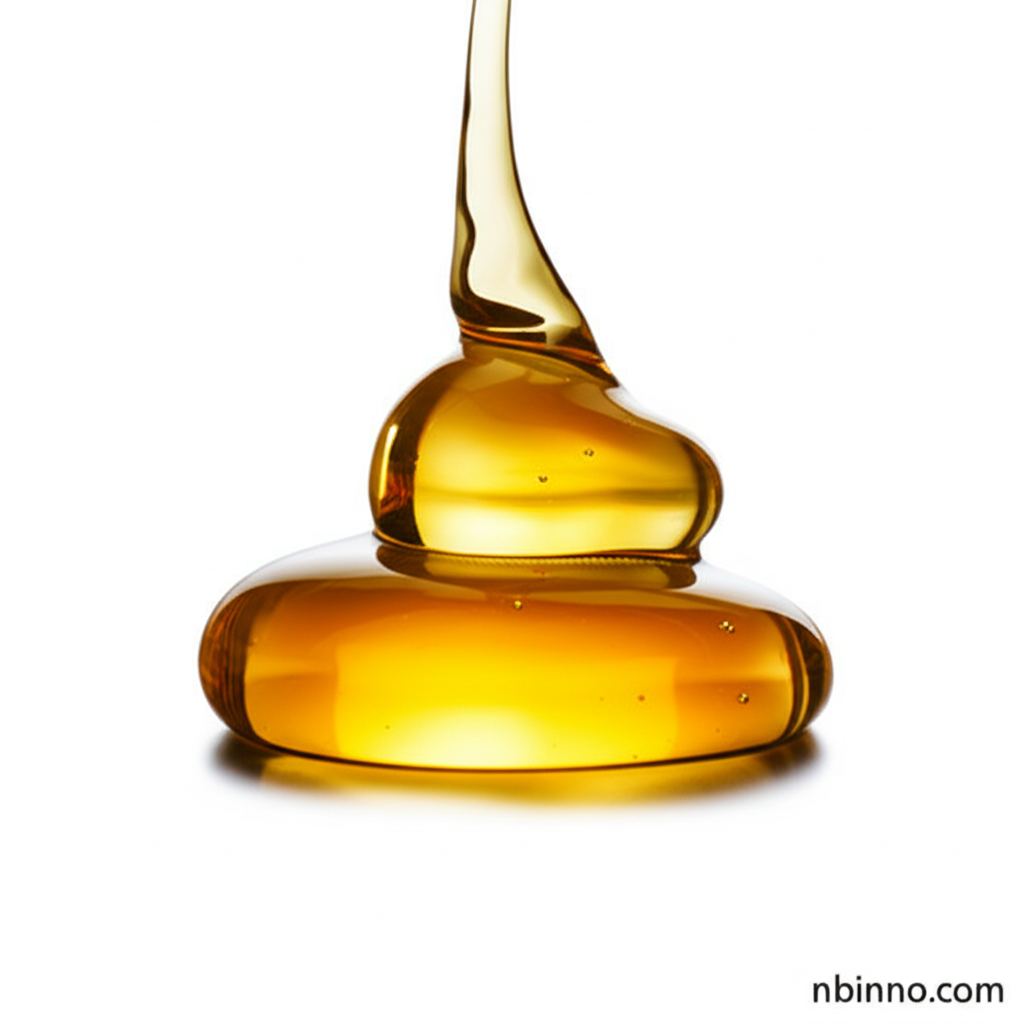Sorbitan Monooleate (Span 80): Your Essential Emulsifier
Discover the versatile emulsifying power of Sorbitan Monooleate for your food, cosmetic, and industrial needs.
Get a Quote & SampleProduct Core Value

Sorbitan Monooleate
Sorbitan Monooleate, also known as Span 80, is a critical non-ionic surfactant and emulsifier derived from sorbitol and oleic acid. Its unique structure provides excellent emulsifying, stabilizing, lubricating, and thickening properties, making it indispensable in a wide array of formulations. With an HLB value of 4.3, it is primarily recognized as a water-in-oil (W/O) emulsifier, adept at bridging the gap between water and oil phases to create stable mixtures.
- Understanding Sorbitan Monooleate: This emulsifier is synthesized by the esterification of sorbitan with oleic acid, resulting in a viscous liquid. Its ability to stabilize emulsions is key to its widespread use, ensuring product integrity and desired texture. Explore the sorbitan monooleate uses in various industries.
- Span 80 in Food Applications: Within the food industry, Sorbitan Monooleate is a popular choice for creating smooth textures and preventing separation in products like ice cream, salad dressings, and baked goods. Its role as a sorbitan monooleate in food ensures enhanced product quality and shelf-life.
- Cosmetic and Personal Care Benefits: In cosmetics and personal care, Span 80 acts as a surfactant, emulsifier, and solubilizer, contributing to the efficacy and sensory appeal of creams, lotions, and shampoos. The versatility of sorbitan monooleate for cosmetics makes it a staple ingredient.
- Industrial Significance: Beyond food and cosmetics, this nonionic surfactant applications extend to textiles, paints, and even explosives, showcasing its broad utility and effectiveness in diverse industrial processes. Investigating span 80 hl b value helps in understanding its emulsifying capabilities.
Key Advantages
Excellent Emulsification
The primary advantage of Sorbitan Monooleate is its capacity to create stable water-in-oil emulsions, a crucial function for many product formulations. This ensures that oil and water components remain integrated, preventing phase separation and maintaining product consistency, which is vital for the reliable performance of vegetable derived emulsifiers.
Versatility and Compatibility
Span 80 demonstrates broad compatibility with various oils, active ingredients, and other emulsifiers, like polysorbates. This versatility allows for its use across a wide spectrum of applications, from food products to pharmaceuticals and industrial coatings, making it a go-to ingredient for formulators seeking to optimize their products. Understanding the sorbitan oleate applications reveals its broad utility.
Texture Enhancement and Stability
Incorporating Sorbitan Monooleate can significantly improve product texture, providing a smoother, more desirable mouthfeel or skin feel. It also enhances product stability, extending shelf life by preventing degradation and separation, which is a key benefit highlighted in discussions about sorbitan monooleate properties.
Key Applications
Food Industry
Used as an emulsifier and stabilizer in ice cream, salad dressings, baked goods, and confectionery to improve texture and prevent separation, ensuring consistent product quality. The role of span 80 emulsifier in food is well-documented.
Cosmetics & Personal Care
Acts as a surfactant and emulsifier in creams, lotions, shampoos, and makeup, contributing to product stability, texture, and the delivery of active ingredients. Its suitability for sorbitan monooleate for cosmetics is widely recognized.
Pharmaceuticals
Employed in the preparation of ointments, creams, and even in vaccine formulations as an excipient and stabilizer, demonstrating its safety and efficacy in medical applications. Understanding span 80 hl b value is important for pharmaceutical formulation.
Industrial Uses
Finds application in textiles as a softener and anti-static agent, in paints as a dispersant, and in various industrial processes requiring emulsification and stabilization, showcasing its broad nonionic surfactant applications.
